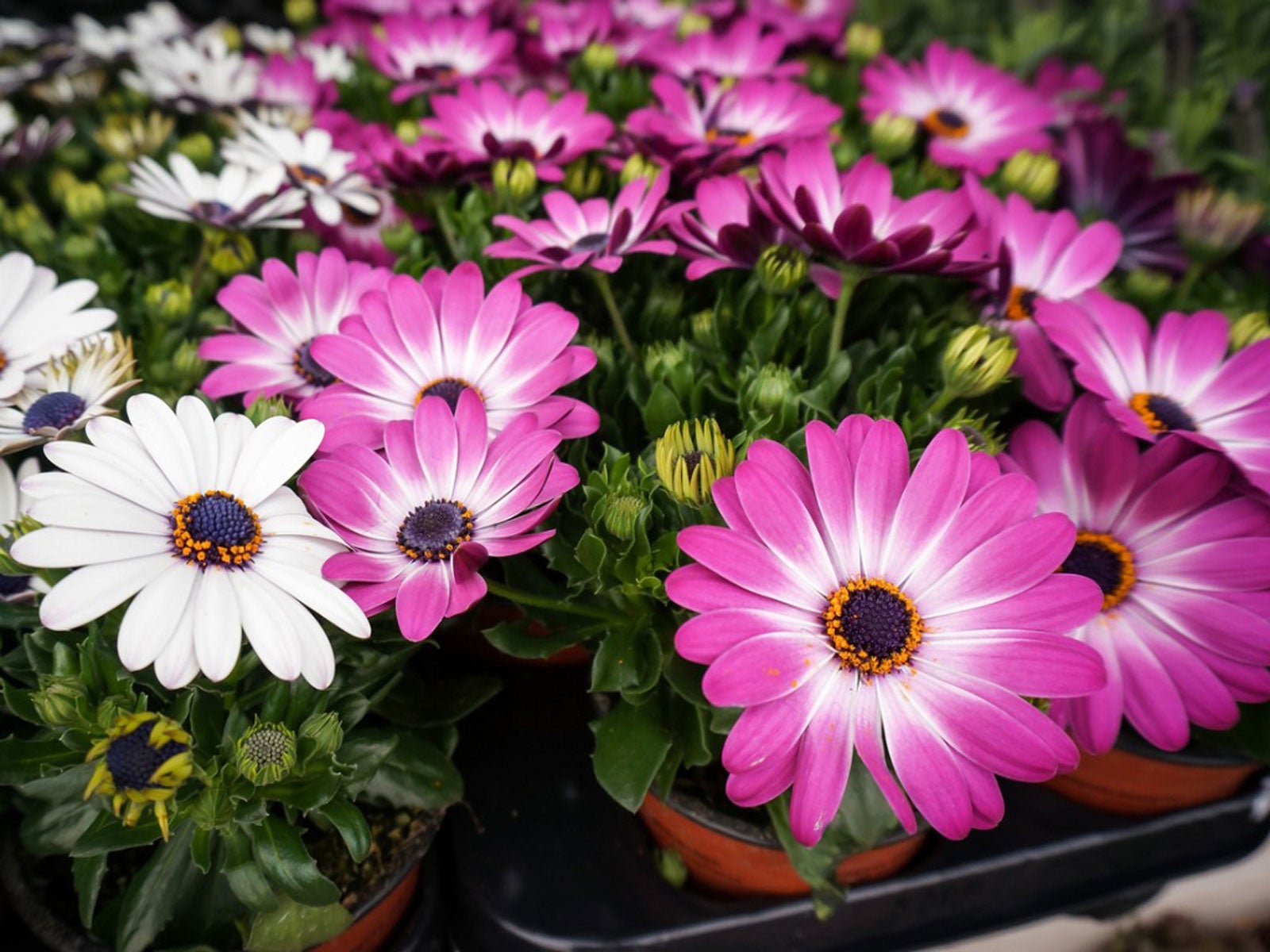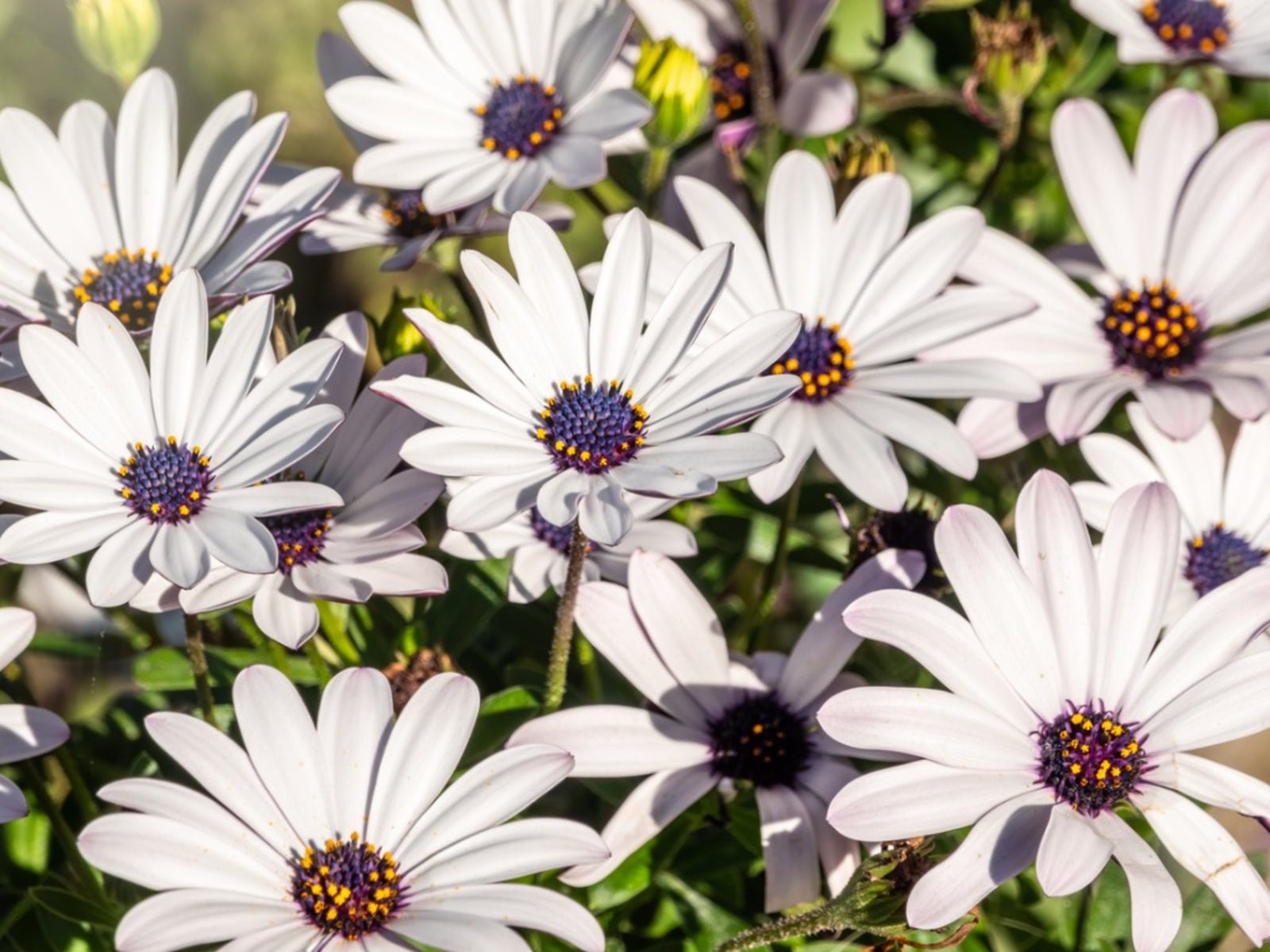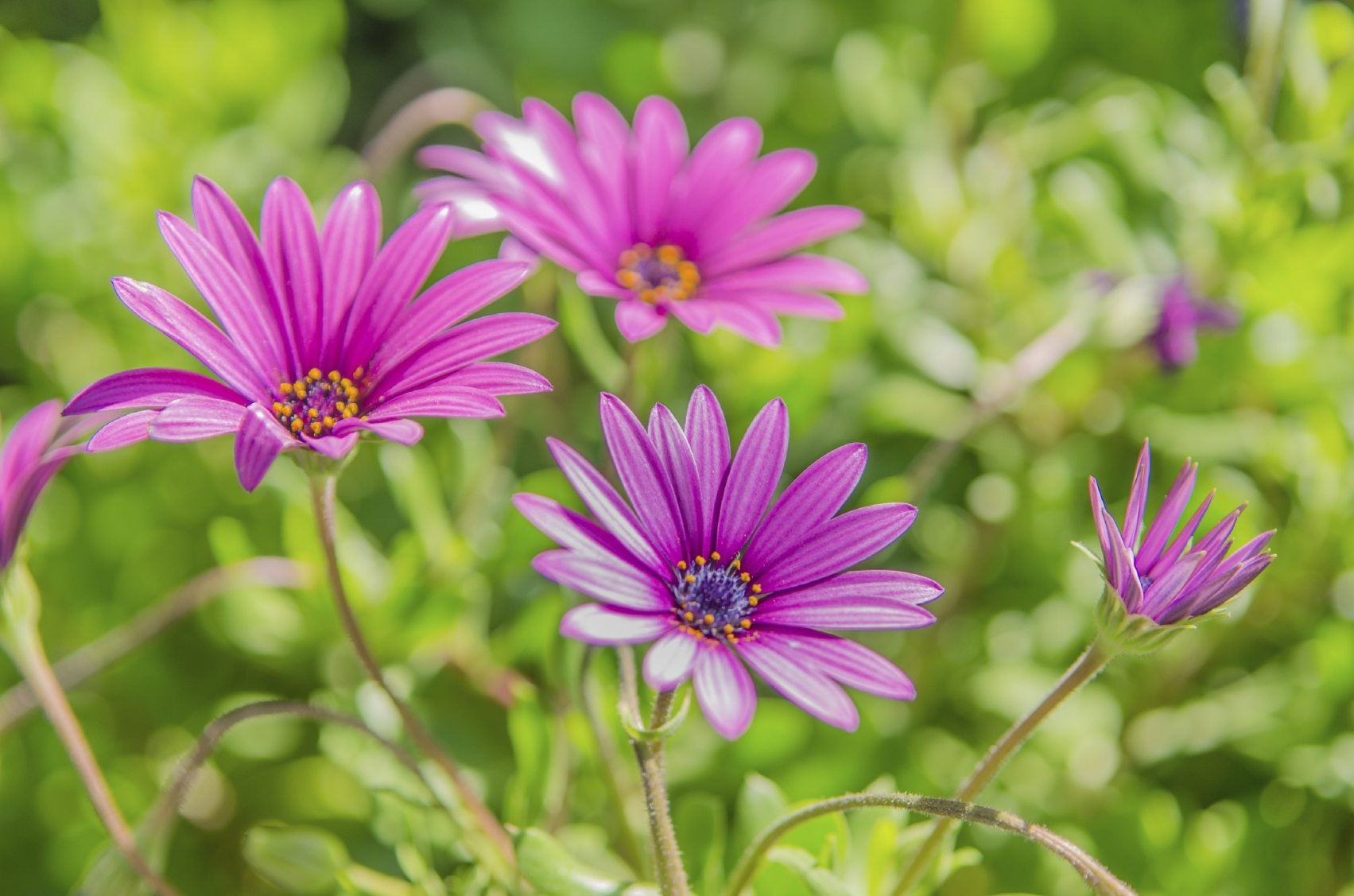Growing African Daisies - Tips For Growing Osteospermum
They're bright and colorful, but the great thing about growing osteospermums is that they tolerate dry or poor soil and heat.


Growing Osteospermum: How To Care For African Daisies
Osteospermum has become a very popular plant for flower arrangements in the past few years. Many people may wonder what is osteospermum? This flower is better known as the African daisy. Growing osteospermum at home is very possible. Learn how to care for African daisies in your garden rather than having to pay those pricey florist costs.
How to Care for African Daisies
Osteospermum is from Africa, hence the name African daisies. Growing African daisies require conditions similar to those found in Africa. It likes heat and full sun. It needs well-drained soil and, in fact, will tolerate dry soils.
Osteospermum is an annual and, like most annuals, it enjoys extra fertilizer. But the nice thing about African daisies is that they are one of the few annuals that will still bloom for you if they are planted in poor soil.
When growing osteospermum, you can expect them to start blooming about mid-summer. If you have grown them from seed yourself, they may not start blooming until late summer. You can expect them to grow to be 2-5 feet (0.5 to 1.5 m.) high.
Growing African Daisies from Seed
If available, you can buy osteospermum from a local nursery as a seedling but, if they are not available near you, you can grow them from seed. Because these are African plants, many people wonder, “What is the planting time for African daisy seeds?”. They should be started indoors around the same time as your other annuals, which is about 6 to 8 weeks before the last frost in your area.
African daisies need light to germinate, so you simply need to sprinkle the seeds on top of the soil to plant them. Do not cover them. Once you have them on the soil, place them in a cool, well-lit location. Do not use heat to germinate them. They do not like it.
You should see growing osteospermum seedlings in about 2 weeks. Once the seedlings are 2”-3” (5 to 7.5 cm.) high, you can transplant them into individual pots to grow until the last frost has passed.
Gardening tips, videos, info and more delivered right to your inbox!
Sign up for the Gardening Know How newsletter today and receive a free copy of our e-book "How to Grow Delicious Tomatoes".
After the last frost, you can plant the seedlings in your garden. Plant them 12”- 18” (30.5 to 45.5 cm.) apart for best growth.

Heather Rhoades founded Gardening Know How in 2007. She holds degrees from Cleveland State University and Northern Kentucky University. She is an avid gardener with a passion for community, and is a recipient of the Master Gardeners of Ohio Lifetime Achievement Award.
-
 4 Superfast Composting Methods: Turn Waste Into Garden Gold In 30 Days Or Less
4 Superfast Composting Methods: Turn Waste Into Garden Gold In 30 Days Or LessTry the fastest composting methods to turbocharge your pile and transform kitchen scraps and garden waste into finished compost in just a few weeks.
By Mary Ellen Ellis
-
 Best Spider Plant Soil – Complete Soil Guide And Expert Tips For Keeping Plants Happy
Best Spider Plant Soil – Complete Soil Guide And Expert Tips For Keeping Plants HappySpider plants are fun and easy plants to grow, but what is the best soil for a spider plant? Selecting the right soil is important so they can thrive.
By Bonnie L. Grant
-
 Arctotis African Daisy – Tips For Growing Arctotis Daisies
Arctotis African Daisy – Tips For Growing Arctotis DaisiesArctotis daisies are one of many flowers frequently also called African daisies. Read on to learn more about arctotis daisy care.
By Tonya Barnett
-
 Do You Trim African Daisies: When And How To Prune African Daisy Plants
Do You Trim African Daisies: When And How To Prune African Daisy PlantsAfrican daisy delights gardeners with a profusion of brightly colored flowers throughout the long summer blooming season. But it needs regular care, including an occasional trim. Learn about pruning African daisies in this article.
By Mary H. Dyer